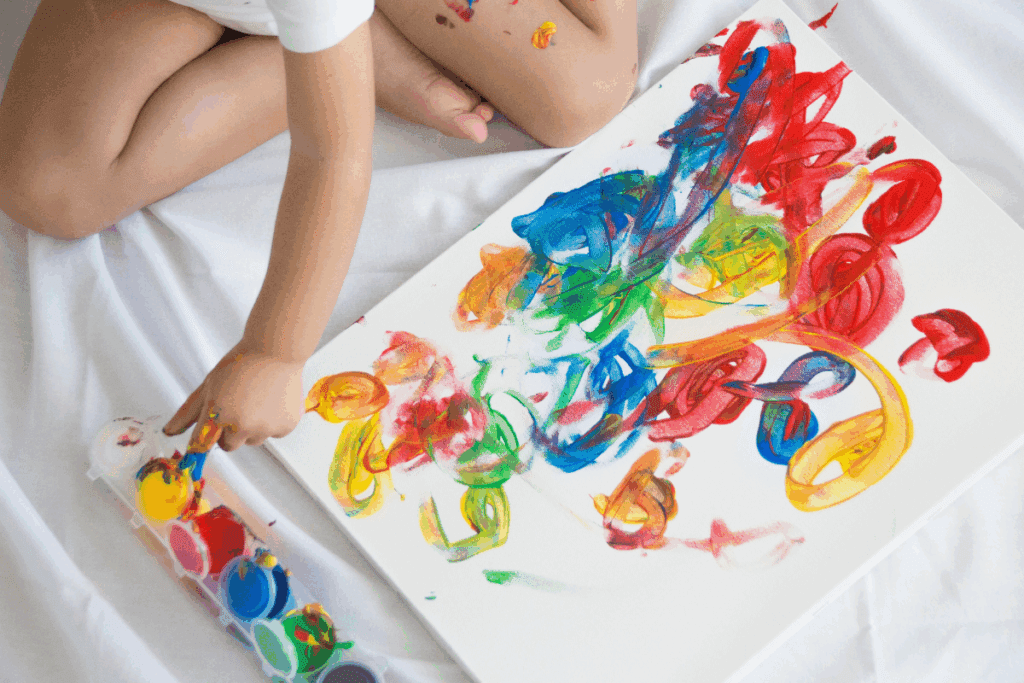How to Foster Creativity in Toddlers Through Art and Play

Creativity is an essential part of childhood development, and fostering it early on can have lasting benefits for your toddler’s cognitive, emotional, and social growth.
Art and play are natural ways for toddlers to express themselves, explore their environment, and develop problem-solving skills. Encouraging creativity through these activities not only nurtures imagination but also builds confidence and fine motor skills.
In this article, we’ll explore effective ways to foster creativity in toddlers through art and play, providing practical tips and ideas to inspire your little one.
Why Creativity Matters in Toddlerhood
Creativity in toddlers is more than just making pretty pictures or playing pretend—it’s about learning to think critically, communicate, and solve problems. Engaging in creative activities helps toddlers:
Develop imagination and originality
Improve fine motor skills through hands-on activities
Build language and communication skills as they describe their creations
Learn to express emotions in a healthy way
Cultivate curiosity and a love for learning
 How Art Encourages Creativity in Toddlers
How Art Encourages Creativity in Toddlers
Art activities are a wonderful way to spark creativity. They offer toddlers the freedom to experiment with colors, textures, and shapes, encouraging self-expression.
Provide Open-Ended Art Materials
Offer materials that encourage exploration rather than creating a specific outcome. Examples include:
Crayons, washable markers, and finger paints
Playdough or clay
Paper of different textures and colors
Stamps, stickers, and collage materials
Open-ended materials let toddlers experiment without fear of making mistakes, fostering a sense of independence and creativity.
Create a Safe and Inviting Art Space
Designate an area where your toddler can freely create without worrying about making a mess.
Cover tables with washable cloths or paper, and use smocks or old shirts to protect clothing. A welcoming space encourages your child to engage more deeply in creative play.
 Encourage Process Over Product
Encourage Process Over Product
Focus on the experience of creating rather than the final artwork. Ask open-ended questions like, “Tell me about your picture,” or “What colors do you like to use?” This helps your toddler appreciate the joy of creation and feel proud of their efforts regardless of the outcome.
How Play Boosts Toddler Creativity
Play is the natural language of childhood and a powerful tool for nurturing creativity. Through play, toddlers learn to imagine, explore roles, and solve problems.
Provide Diverse Play Materials
Introduce a variety of toys and props that inspire imaginative play, such as:
Dress-up clothes and hats
Building blocks or LEGO Duplo
Puppets and dolls
Kitchen sets or toy tools
These materials encourage toddlers to invent stories, mimic adult behaviors, and experiment with different ideas.
Encourage Pretend Play
Pretend play allows toddlers to express creativity by acting out scenarios and experimenting with social roles. Join your child in their play by asking questions or taking on characters, but let them lead the narrative. This collaboration supports language development and creative thinking.
 Limit Screen Time
Limit Screen Time
Excessive screen time can limit creative play. Encourage hands-on activities and interaction with peers or family members to nurture imagination and social skills.
Practical Tips for Fostering Creativity Daily
Incorporating creativity into everyday routines can make a big difference in your toddler’s development.
Set Aside Time for Creative Play
Dedicate regular time in your daily schedule for art and play activities. Even 15 to 30 minutes of focused creative play can provide valuable developmental benefits.
Let Toddlers Make Choices
Offer options when planning activities, allowing your toddler to decide what materials to use or which game to play. Making choices encourages autonomy and sparks interest.
Celebrate Creativity
Show enthusiasm for your toddler’s creations and ideas. Display their artwork, praise their efforts, and share their stories with family members. Positive reinforcement boosts their confidence and motivates further creativity.
 Overcoming Common Challenges
Overcoming Common Challenges
Fostering creativity isn’t always smooth sailing. Here are some solutions for common challenges:
Mess Management
Creative play can get messy! Embrace the mess by setting up an easy-to-clean area and using washable supplies. Teach your toddler simple cleanup routines to promote responsibility.
Short Attention Spans
Toddlers naturally have short attention spans. Offer a variety of short, engaging activities and allow them to switch when they lose interest. Follow their lead to keep play fun and stress-free.
 Balancing Structure and Freedom
Balancing Structure and Freedom
While freedom is important, toddlers also benefit from some guidance. Introduce basic rules like sharing and gentle use of materials, and provide structure through routines to create a safe environment for creativity.
Nurturing Lifelong Creativity
Fostering creativity in toddlers through art and play is a gift that can shape their future in countless positive ways.
By providing open-ended materials, encouraging imaginative play, and creating supportive environments, you help your child develop confidence, problem-solving skills, and emotional intelligence.
Remember that the goal is to enjoy the process and celebrate your toddler’s unique ideas and expressions. With patience, encouragement, and a playful spirit, you can nurture a creative mindset that will serve your child well throughout their life.
Did you find this post useful or inspiring? Save THIS PIN to your PARENTING Board on Pinterest! 😊


 How Art Encourages Creativity in Toddlers
How Art Encourages Creativity in Toddlers Encourage Process Over Product
Encourage Process Over Product Limit Screen Time
Limit Screen Time Overcoming Common Challenges
Overcoming Common Challenges Balancing Structure and Freedom
Balancing Structure and Freedom
You may also like